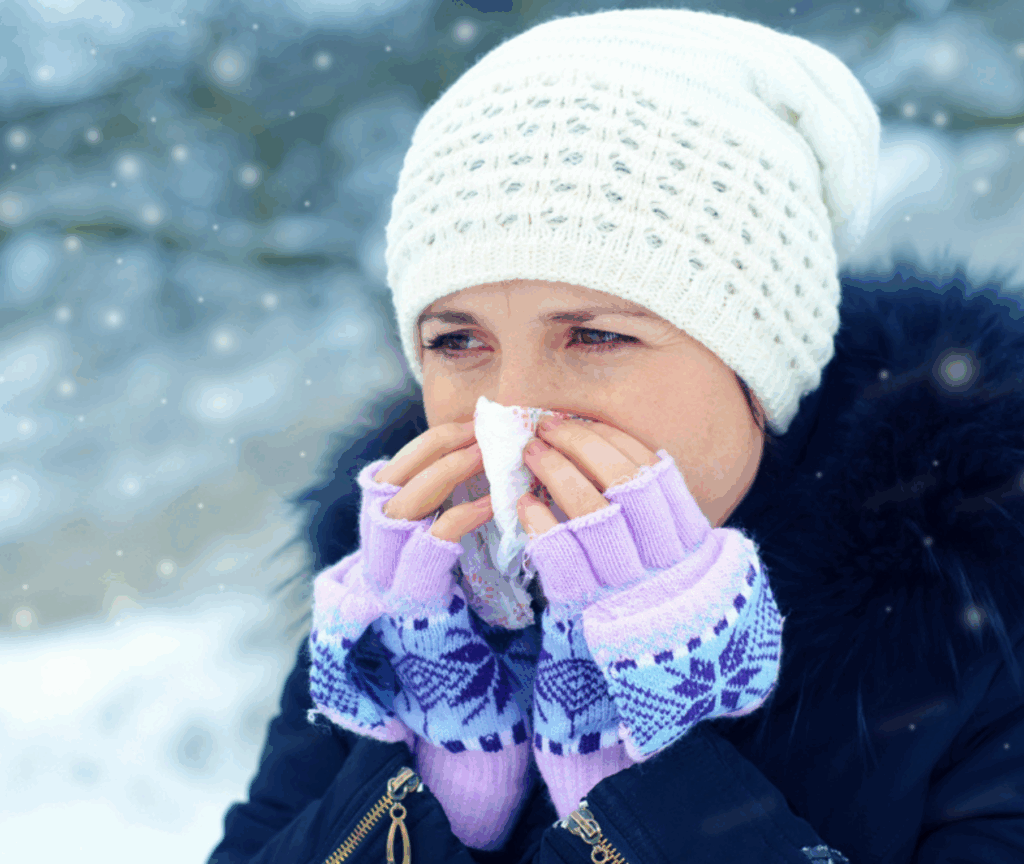Chronic Obstructive Pulmonary Disease (COPD) can make colder months especially challenging. Cold air, dry environments, and a higher risk of infections can all increase the likelihood of flare-ups. These flare-ups—also called exacerbations—can make breathing much harder and often require medical attention. The good news is that there are simple, everyday steps that can lower risks and help people with COPD breathe easier through winter.
Why Colder Months Increase COPD Risks
Cold weather brings unique challenges for people living with COPD. Cold air is usually dry, which irritates the lungs and makes breathing more difficult. When inhaled, it can narrow airways and trigger coughing or shortness of breath. At the same time, winter is also flu and pneumonia season—two of the most common causes of COPD flare-ups.
Indoor heating, while keeping homes warm, can also dry out the air and make mucus thicker, which adds to breathing problems. Because of these combined factors, extra care is needed during colder months to avoid flare-ups.
Everyday Steps to Prevent Flare-Ups
Here are some simple, effective ways to protect your lungs in winter:
1. Bundle Up in Cold Weather
When stepping outside, always wear a scarf or mask over your nose and mouth. This helps warm the air before it reaches your lungs, making it less irritating. Dressing in layers and keeping your chest warm also reduces stress on your lungs.
2. Avoid Sick Contacts
Winter is prime time for colds, flu, and other respiratory illnesses. Try to limit close contact with anyone who is sick. If you need to be around others, wearing a mask adds another layer of protection.
3. Stay Up to Date on Vaccines
Vaccinations are a powerful defense against infections. Flu shots, pneumonia vaccines, and COVID-19 boosters help reduce the chance of severe illness that could trigger a flare-up.
4. Wash Hands Often
Practicing good hand hygiene prevents the spread of germs. Wash your hands with soap and water for at least 20 seconds, especially after being in public places. Keep hand sanitizer with you when soap isn’t available.
5. Use Prescribed Inhalers Regularly
Even if you feel well, don’t skip your medications. Inhalers and other prescribed treatments help control COPD daily and keep airways open, making flare-ups less likely.
6. Keep Indoor Air Clean
Avoid smoke, fumes, and strong odors inside the home. Using a humidifier can help keep the air moist, which soothes airways. Be sure to clean the humidifier regularly to prevent mold growth.
7. Exercise Safely Indoors
Staying active supports lung health. During winter, try gentle indoor exercises like chair stretches, light yoga, or walking in place. These movements keep lungs working without the stress of cold outdoor air.
8. Monitor Symptoms Daily
Pay attention to changes in your breathing, mucus, or energy levels. Acting early when symptoms worsen—such as increased coughing or thicker mucus—can prevent a full flare-up.
9. Eat Well and Stay Hydrated
Nutrition plays a key role in overall health. Eating balanced meals strengthens your immune system. Drinking plenty of fluids keeps mucus thin, making it easier to clear from the lungs.
10. Have an Action Plan
Work with your healthcare provider to create a COPD action plan. This plan outlines what to do if symptoms worsen and when to seek medical care. Having clear instructions reduces stress and speeds up response during flare-ups.
Daily Routines That Support Lung Health
Preventing flare-ups isn’t only about reacting to problems—it’s about building healthy routines that make your lungs stronger over time.
- Create a warm indoor environment – Keep your living space comfortable and avoid sudden temperature changes.
- Practice breathing techniques – Pursed-lip breathing and diaphragmatic breathing help control shortness of breath.
- Stay active every day – Even short sessions of gentle movement keep your lungs and muscles in better shape.
- Limit exposure to irritants – Skip candles, fireplaces, or harsh cleaning products that can irritate airways.
These daily habits build resilience and make your body better prepared to handle winter challenges.
Tips for Caregivers Supporting Someone with COPD
Caregivers play an important role in helping loved ones prevent flare-ups. If you are supporting someone with COPD, you can:
- Remind them to wear a scarf or mask when going outside.
- Help manage medication schedules and ensure prescriptions are refilled on time.
- Encourage hydration and balanced meals.
- Set up humidifiers or air purifiers indoors for better air quality.
- Watch for early signs of infection, such as changes in mucus color or increased fatigue.
Your support helps create a safer, healthier environment and reduces stress for the person living with COPD.
When to Seek Medical Help
Even with careful prevention, flare-ups can still happen. It’s important to know when to call a healthcare provider or seek emergency care. Warning signs include:
- Severe shortness of breath not relieved by rescue medication
- Blue lips or fingertips, indicating low oxygen
- High fever with coughing or mucus changes
- Confusion, dizziness, or unusual fatigue
Having an action plan from a healthcare provider ensures that decisions are made quickly, reducing the chance of hospital stays.
Final Thoughts
Preventing COPD flare-ups during colder months is about preparation, consistency, and support. By bundling up outdoors, practicing good hygiene, staying active indoors, and following treatment plans, people with COPD can reduce risks and enjoy a better quality of life.
For caregivers and families, the focus should be on creating a safe, supportive environment where loved ones feel comfortable and protected. With these simple steps, it’s possible to get through the winter season with fewer flare-ups and greater peace of mind.

